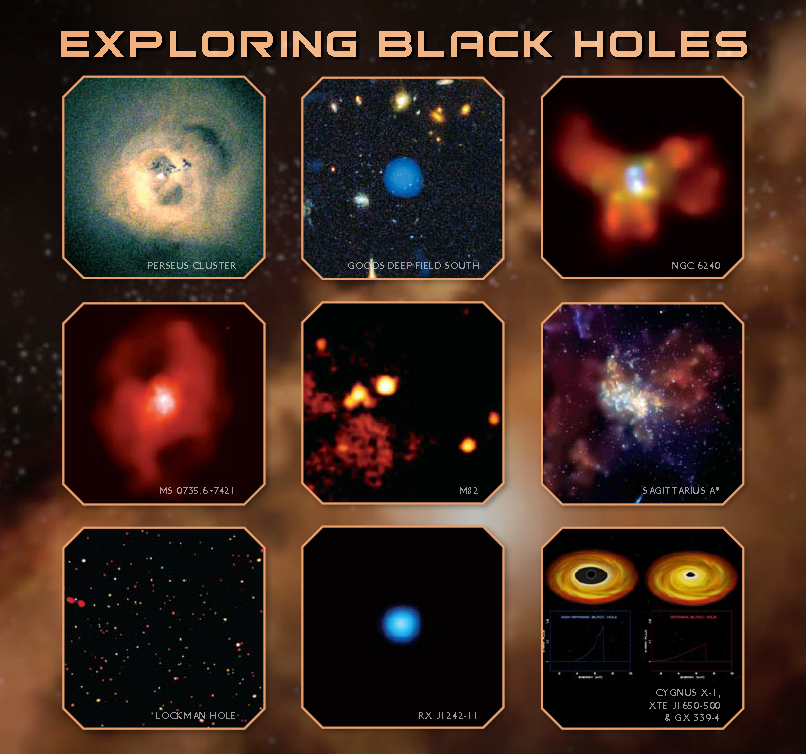
When a star runs out of nuclear fuel, it will collapse. If the core, or central region, of the star has a mass that is greater than three Suns, no known nuclear forces can prevent the core from forming a deep gravitational warp in space called a black hole. A black hole does not have a surface in the usual sense of the word. There is simply a region, or boundary, in space around a black hole beyond which we cannot see. This boundary is called the event horizon. The radius of the event horizon (proportional to the mass) is very small, only 30 kilometers for a non-spinning black hole with the mass of 10 Suns.
Anything that passes beyond the event horizon is doomed to be crushed as it descends ever deeper into the gravitational well of the black hole. No visible light, nor X-rays, nor any other form of electromagnetic radiation, nor any particle, no matter how energetic, can escape.
With its unique properties, Chandra is peerless as a black hole probe - both near and far. Not even Chandra can "see" into black holes, but it can tackle many of their other mysteries.
Using Chandra, scientists have discovered the "missing link" of mid-sized black holes, found hidden populations, and estimated how many black holes are in the Universe. They have studied their dining habits and how fast they spin. They found a black hole that generated the deepest note ever detected in the Universe, and another that generated the most powerful explosion. They found direct evidence for a star that was torn apart by a supermassive black hole. They observed two supermassive black holes orbiting in the same galaxy, destined for a titanic collision.
Chandra observations strongly confirmed the reality of the "event horizon". Expect more startling revelations about the lives of black holes as Chandra continues its mission to probe our Universe!